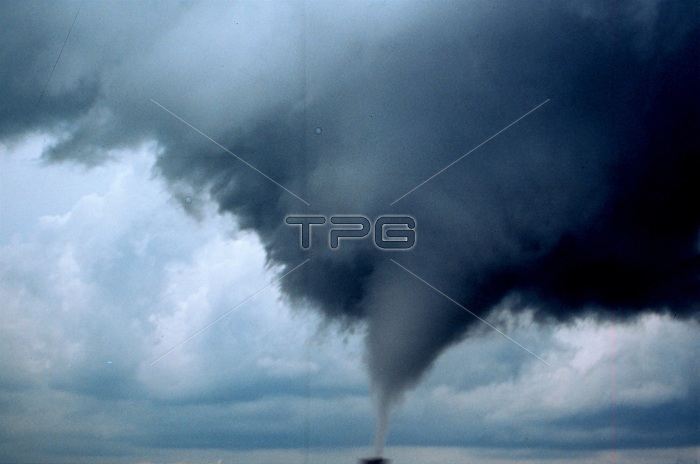
A tornado is a violent, dangerous, rotating column of air that is in contact with both the surface of the earth and a cumulonimbus cloud or, in rare cases, the base of a cumulus cloud. They are often referred to as a twister or a cyclone, although the word cyclone is used in meteorology in a wider sense, to name any closed low pressure circulation. Tornadoes come in many shapes and sizes, but are typically in the form of a visible condensation funnel, whose narrow end touches the earth and is often encircled by a cloud of debris and dust. Most tornadoes have wind speeds less than 110 miles per hour (177 km/h), are approximately 250 feet (80 m) across, and travel a few miles (several kilometers) before dissipating. The most extreme tornadoes can attain wind speeds of more than 300 mph (480 km/h), stretch more than two miles (3 km) across, and stay on the ground for dozens of miles (more than 100 km). Project Vortex-99. An occluded mesocyclone tornado rated an F3 by an NWS damage survey. Occluded means old circulation on a storm; this tornado was forming while the new circulation was beginning to form the tornadoes which preceeded the F5 Oklahoma City tornado. Photo #1 of sequence. Oklahoma, 10 mi. south of Anadarko May 3, 1999.
| px | px | dpi | = | cm | x | cm | = | MB |
Details
Creative#:
TOP22088021
Source:
達志影像
Authorization Type:
RM
Release Information:
須由TPG 完整授權
Model Release:
N/A
Property Release:
No
Right to Privacy:
No
Same folder images:

 Loading
Loading